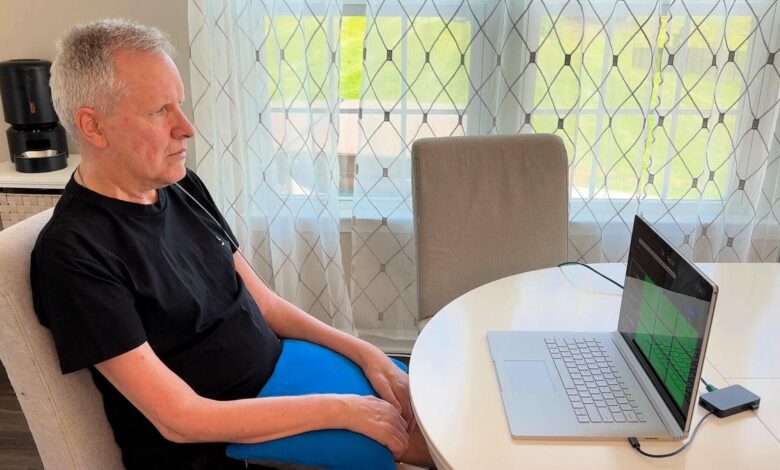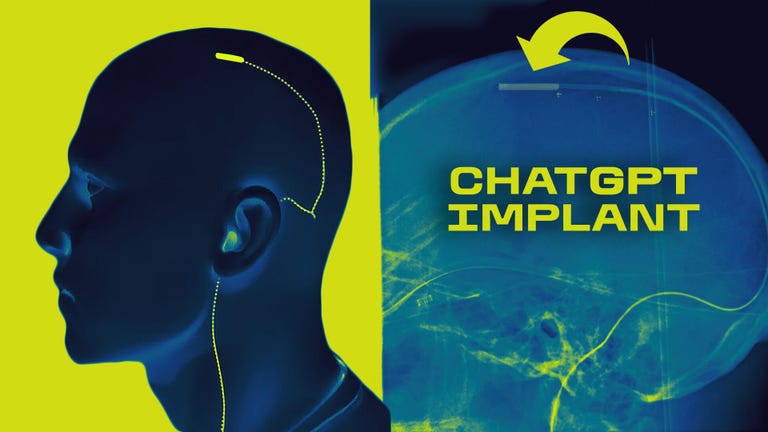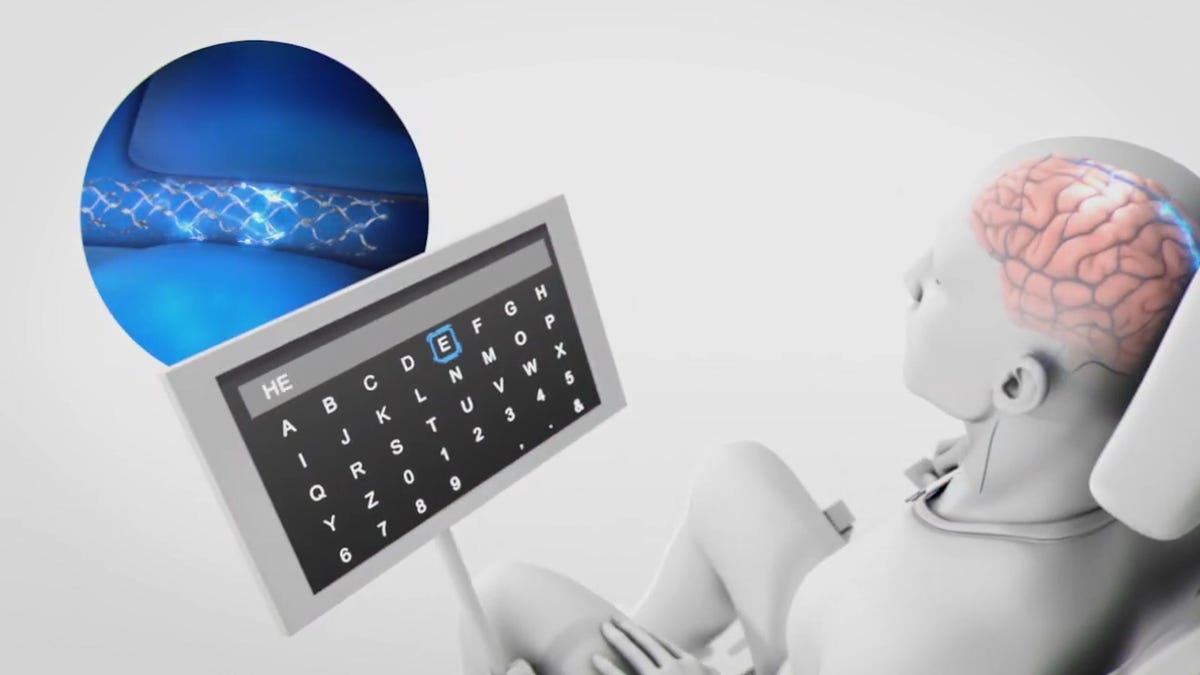How this brain implant uses ChatGPT







Look at this: What it’s like to use a brain implant with ChatGPT
One of the leading companies in the field of implantable brain-computer interfaces (BCI) is experimenting with ChatGPT integration to make it easier for people with paralysis to control their digital devices.
We’ve previously covered Synchron’s unique approach to implanting its BCI without the need for open brain surgery. Now, the company has integrated OpenAI’s ChatGPT into its software, something the company says is a world first for a BCI company.
We spoke with Tom Oxley, founder and CEO of Synchron, and Mark, a pioneering patient featured in the demo video, to find out what it’s like to use AI, where the integration of AI and brain implants is headed, and what the future holds.

Mark shows how ChatGPT makes typing and communicating with Synchron’s BCI easier.
Mark was diagnosed with ALS in 2021 and says he has “almost no use of his hands at this point.” He is one of 10 people worldwide to have Synchron’s BCI implanted as part of clinical trials.
Typing out messages word-by-word using a BCI is still time-consuming. The addition of AI is seen as a way to make communication faster and easier by taking into account relevant context, such as what was last said in a conversation, and anticipating responses a person might want to respond with, presenting them with a menu of possible options.

Mark uses his BCI to choose from a menu of possible answers generated by ChatGPT.
Now you don’t have to type out every word, you can fill in the answers with a single click. There’s a refresh button if none of the AI answers are correct. Mark also notices that the AI is getting better at giving answers that are more in line with what he might say.
“Every now and then he’ll drop a swear word, which I sometimes do,” he says, laughing.
Synchron CEO Tom Oxley tells me that the company has been experimenting with different AI models for about a year, but that the release of OpenAI’s ChatGPT-4o in May opened up some interesting new capabilities.
The “o” in ChatGPT-4o stands for “omni” and represents the fact that this latest version can process text, audio and visual input all at once and output it.

A visually impaired man uses OpenAI’s ChatGPT-4o to let him know when to raise his hand to hail a cab.
One OpenAI demo caught Oxley’s attention. It showed a visually impaired man navigating a city, with the AI describing his surroundings and even helping him hail a cab. Oxley sees the future of BCIs as something similar: large language models like ChatGPT ingesting relevant context in the form of text, audio, and visuals to provide relevant prompts that users can select with their BCI.
Oxley also says the company is not locked into a particular grand language model. In the rapidly changing field of AI, Synchron will adopt the systems that best meet the needs of its patients.
Synchron’s implant, a stentrode, is inserted into a blood vessel near the brain’s motor cortex, the part of our brain that controls our movements. To make a click or a selection with the Synchron BCI, users think about moving, and the BCI interprets those thoughts and transmits them wirelessly to perform the desired action on the user’s device.

Synchron’s BCI connects people’s brains directly to their devices.
Synchron’s BCI is expected to cost between $50,000 and $100,000, comparable to the cost of other implanted medical devices such as pacemakers or cochlear implants. No implantable BCI has yet received marketing approval from the U.S. Food and Drug Administration, something Synchron hopes to change. While the process could take several years, Synchron’s BCI is already having an impact.
“There’s hope coming,” Mark says, for anyone who’s in a similar situation. Mark closed our conversation by encouraging people to get involved in finding solutions, “Whatever I can do to help others, I think that’s why we’re here.”
Watch the video in this article to see Synchron’s BCI in action.




